
Beaux-Arts architecture was the academic architectural style taught at the École des Beaux-Arts in Paris, particularly from the 1830s to the end of the 19th century. It drew upon the principles of French neoclassicism, but also incorporated Renaissance and Baroque elements, and used modern materials, such as iron and glass, and later, steel. It was an important style and enormous influence in Europe and the Americas through the end of the 19th century, and into the 20th, particularly for institutional and public buildings.
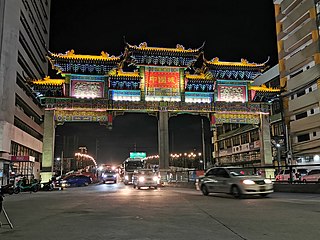
Binondo is a district in Manila and is referred to as the city's Chinatown. Its influence extends beyond to the places of Quiapo, Santa Cruz, San Nicolas and Tondo. It is the oldest Chinatown in the world, established in 1594 by the Spaniards as a settlement near Intramuros but across the Pasig River for Catholic Chinese; it was positioned so that the colonial administration could keep a close eye on their migrant subjects. It was already a hub of Chinese commerce even before the Spanish colonial period. Binondo is the center of commerce and trade of Manila, where all types of business run by Chinese Filipinos thrive.
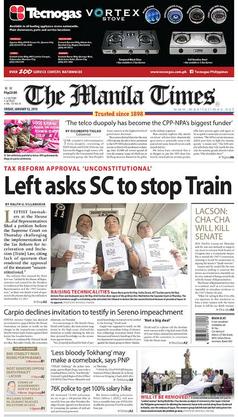
The Manila Times is the oldest extant English-language newspaper in the Philippines. It is published daily by The Manila Times Publishing Corp. with editorial and administrative offices at 2/F Sitio Grande Building, 409 A. Soriano Avenue, Intramuros, Manila.

The Pasig River Ferry Service (PRFS) is a public water bus service based in Metro Manila, the Philippines. It is currently the only water-based transportation service in Metro Manila that cruises the length of the Pasig River and Marikina River, passing through the cities of Manila, Makati, Mandaluyong, Pasig, Marikina, and Taguig.
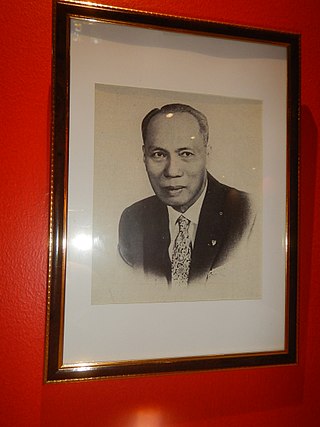
Fernando Hizon Ocampo, Sr. was a Filipino architect and civil engineer.

PMI Colleges, formerly known as Philippine Maritime Institute, is a private, non-sectarian, co-educational higher education, Maritime institution established on September 18, 1948 in Santa Cruz, Manila, Philippines where its main campus is located.

Escolta Street is a historic east–west street located in the old downtown district of Binondo in Manila, Philippines. It runs parallel to the Pasig River, from Quintin Paredes Road to Plaza Santa Cruz Road. The street is home to several fine examples of early skyscraper design in the Philippines.
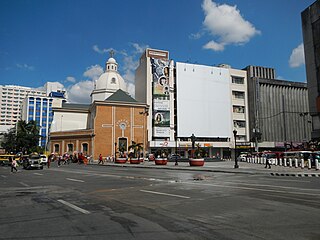
Plaza Lacson, also known by its old name, Plaza (de) Goiti, is a public square in Santa Cruz, Manila. It is bounded by Plaza Santa Cruz Road and Escolta Street to the west, Carlos Palanca Street to the south, and Carriedo Street to the east. Although the plaza is not considered the center of Santa Cruz, as it is located behind the Santa Cruz Church rather than in front of it, the plaza is considered to be one of the most important squares in Manila.

The First United Building, formerly known and still commonly referred to as Perez-Samanillo Building, is an Art Deco building on Escolta Street in Binondo, Manila, Philippines. It was designed by Andrés P. Luna, the son of renowned painter Juan Luna, and was the tallest building in Manila when it was completed in 1928.

Regina Building, previously known as Roxas Building, is a historic building located along Escolta Street in Binondo, Manila, Philippines. It was designed sequentially by Andrés Luna de San Pedro and Fernando H. Ocampo. The neoclassical beaux-arts commercial structure was built in 1915.
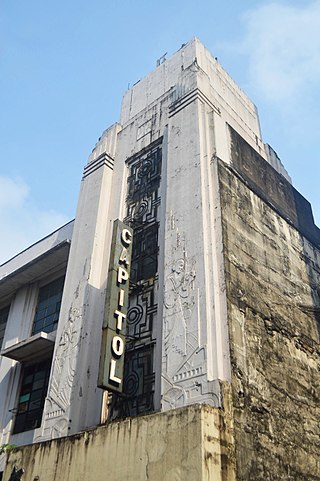
The Capitol Theater was an Art deco theater in Manila, Philippines. It was built during the 1930s along Escolta Street, part of the city's primary commercial district, together with the Lyric Theater. It was designed with a double-balcony by National Artist Juan Nakpil and that was considered a rare feat during that era.

The Calvo Building is a historic building along no. 266 Escolta corner Soda Streets, Binondo, Manila, Philippines. Built in 1938, owned by Doña Emiliana Mortera vda. De Calvo and Angel Calvo, it is an outstanding mix of beaux-arts and neoclassical architecture, designed by Fernando H. Ocampo.
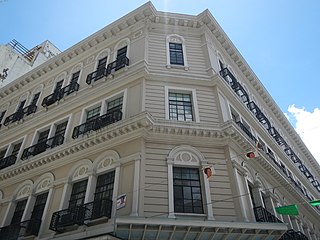
Natividad Building is a historic building along Escolta corner Tomas Pinpin, Binondo, Manila, Philippines. Designed by Philippine-born Spanish architect Fernando de la Cantera Blondeau, it is an outstanding example of beaux-arts architecture. It once housed the Philippine Insurance Commission. During World War II, the building was spared from destruction albeit suffered some damages.
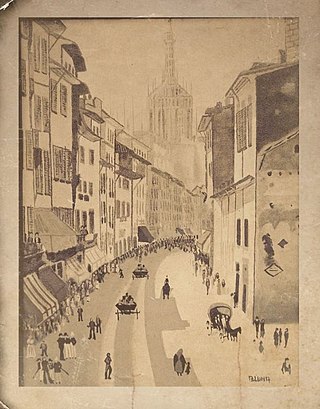
Andrés Pardo de Tavera Luna was a Filipino architect who built the first air-conditioned building in the Philippines, the Crystal Arcade one of the popular tenant of Manila Stock Exchange Building that was once located on No. 71 Escolta Street, Binondo, Manila. He was assigned as the city architect of the City of Manila from 1920 to 1924. His designs were modernist. Some of them were lost during World War II.
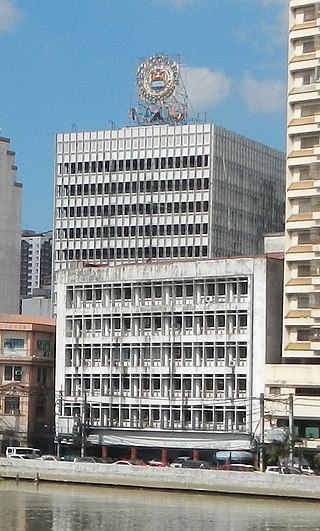
The old Philippine National Bank (PNB) Building was a former office building along Escolta Street in Manila, Philippines.
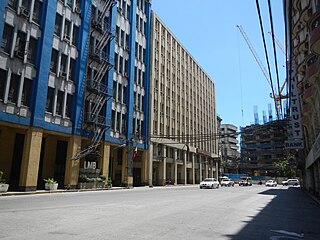
Plaza de Cervantes is a public square in Binondo, Manila, bounded by Quintin Paredes Street to the east and Juan Luna Street to the west, near the Estero de Binondo. Dedicated to Spanish writer Miguel de Cervantes, it is one of three main plazas in Binondo, located between Plaza Moraga to the south and Plaza San Lorenzo Ruiz to the north.
HUB: Make Lab also known as the Hub, is an adaptive reuse, incubator space for creative startups and artists which also acts as an alternative shopping center. Located within the former space occupied by Berg's Department Store in First United Building in Escolta St., Binondo, Manila, Philippines.

The Commercial Bank and Trust Company (Comtrust) Building is a historic building along Escolta and Yuchengco Streets in Binondo, Manila, Philippines. It houses the Escolta branch of the Bank of the Philippine Islands (BPI).



















